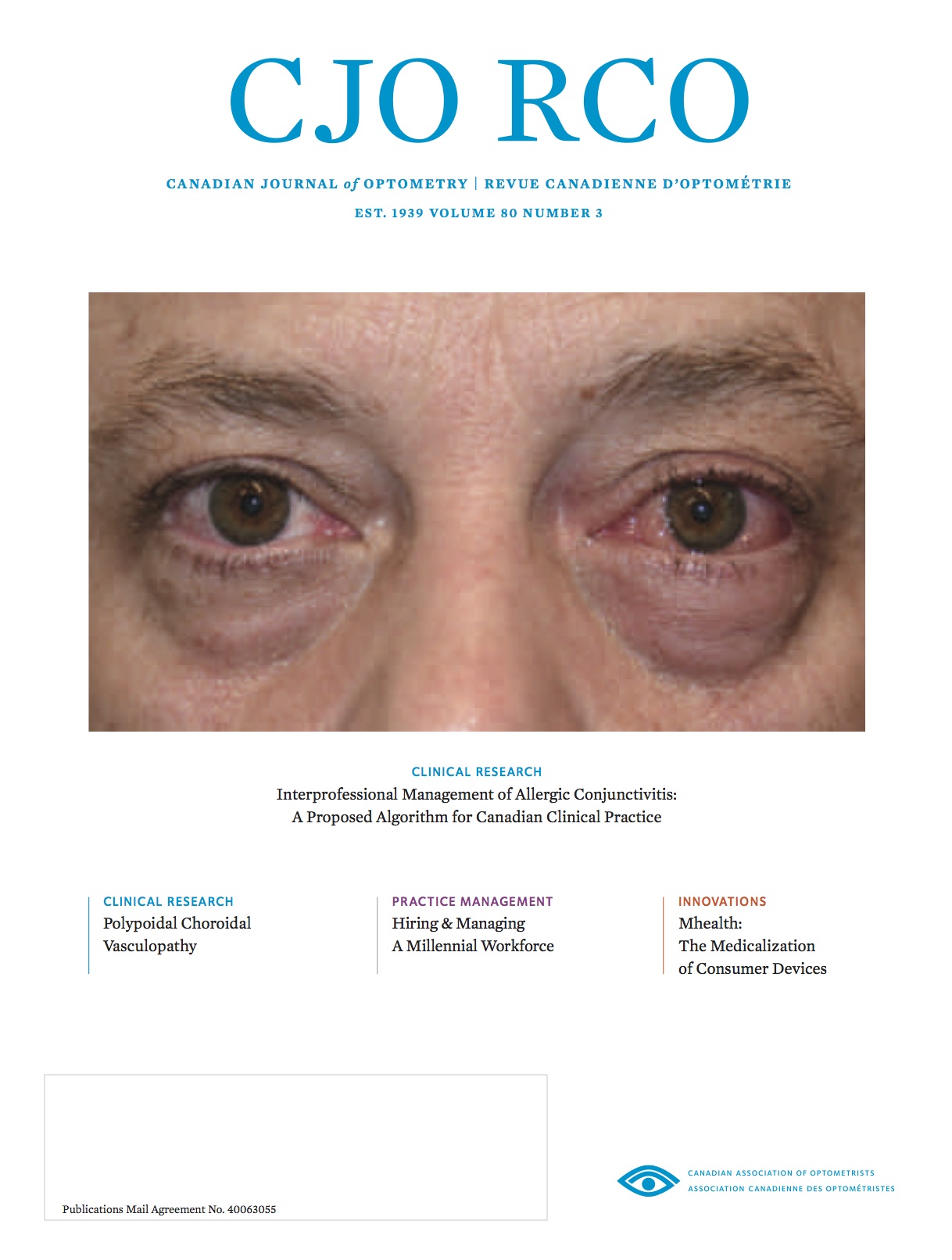Interprofessional Management of Allergic Conjunctivitis
A Proposed Algorithm for Canadian Clinical Practice
DOI:
https://doi.org/10.15353/cjo.80.257Keywords:
clinical research, allergic conjunctivitis, ocular allergy, antihistamines, ophthalmic steroids, dual-actiity agentsAbstract
Ocular allergies affect a large and increasing number of people in North America. Canada’s statistics are likely to mirror those of the U.S., where up to 40% of the population is affected by ocular allergies. The symptoms and signs of ocular allergies can greatly affect productivity and have a dramatic effect on overall quality of life (QoL). Over the years, many effective treatments have been developed for the management of ocular allergies. For allergic conjunctivitis, topical ophthalmic agents include antihistamines, mast-cell stabilizers, dual-activity agents, steroids, nonsteroidal anti-inflammatory drugs, and other immune-modulating drugs. Oral antihistamines are commonly chosen by patients for all forms of allergy, including allergic conjunctivitis. This review provides a summary of the forms of ocular allergy, with a particular focus on the symptoms and signs, diagnosis, current treatment options, and impact on QoL. More importantly, through multidisciplinary collaboration, a simplified treatment algorithm is proposed for Canadian clinical practice. This algorithm provides practitioners the best possible management strategies based on an individual patient presentation, thereby maximizing treatment efficacy and minimizing the effects on tasks of daily living and QoL.
Published
How to Cite
Issue
Section
License
Copyright (c) 2018 C. Lisa Prokopich, OD, MSc, Michael Lee-Poy, MD, CCFP, FCFP, MClSc(FM), Harold Kim, MD, FRCPC

This work is licensed under a Creative Commons Attribution-NonCommercial-NoDerivatives 4.0 International License.


